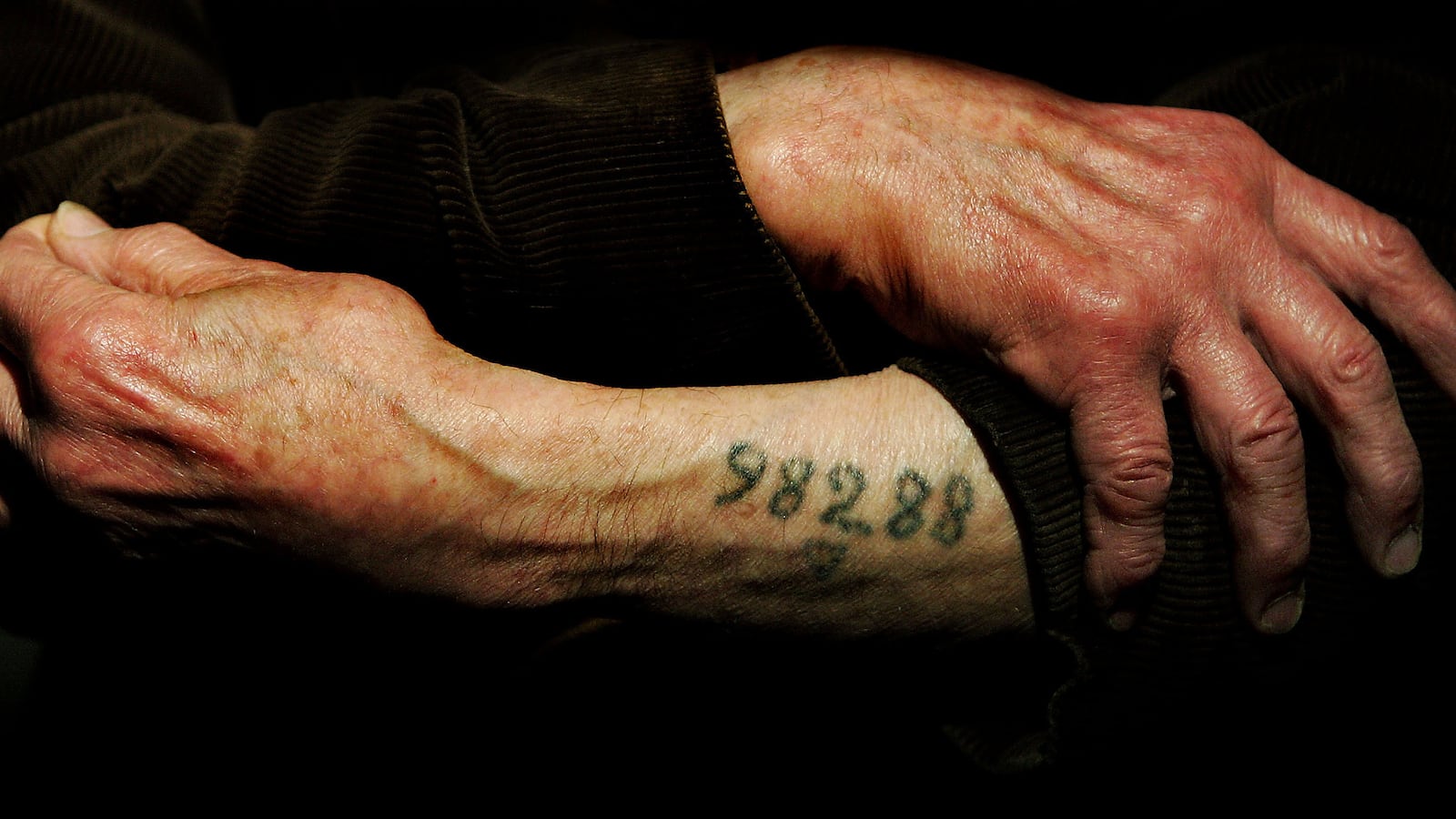In the relatively new field of epigenetics, researchers are attempting to unravel the mysterious mechanisms by which the trauma of parents and grandparents is transmitted to subsequent generations. Slowly but surely, science is bringing descendants of Holocaust survivors as well as descendants of those who lived through other atrocities empirical proof of a legacy that many of us have already known in our bones, our dreams, and our terrors.
At Emory University in Atlanta, scientists studied prepubescent mice who were trained to associate the chemical compound present in cherry blossom with an electric shock. Eventually the mice froze in fear at the smell, even when it was delivered on its own, in the absence of the shock. Despite never having encountered the smell of cherry blossom, the offspring of these mice had the same fearful response to the smell—shuddering when they came in contact with it. So too did three subsequent generations.[i]
Trans-generational epigenetic inheritance—that is, environmentally induced changes passed down from one generation to the next—is seen relatively often in plants. But it is far less common in mammals, and it’s particularly difficult to measure in humans. Still, studies are expanding knowledge beyond the anecdotal, behavioral, and coincidental.
“Trauma is generally defined as an event that induces intense fear, helplessness, or horror,” explains Judith Shulevitz. [ii] “PTSD [post-traumatic stress disorder] occurs when the dysregulation induced by that trauma becomes a body’s default state.” Shulevitz cites Rachel Yehuda’s studies of inherited PTSD among descendants of Holocaust survivors in Israel, which she began after reading Art Spiegelman’s graphic novel Maus, and during a time she was intending to treat and study Holocaust refugees. “She knew some of [the children of survivors] were troubled, but she didn’t know why. Was the damage a function of the way they were being raised? Or was it transmitted by some other means?”
Psychologist and neuroscientist Yehuda studied a group of 32 Holocaust survivors (admittedly a small sample), their children, and grandchildren, finding the correspondences of PTSD “inexplicable” by any other means than intergenerational transmission. Which is to say, my generation’s DNA carries the expression of our parents’ trauma, and the trauma of our grandparents’ too. Our own biochemistry and neurology have been affected by what they endured. Epigenetics researchers are looking at the ways that the experiences of starvation, grief, and shock pass forward into the future.
“If you are looking for it all to be logical and fall into place perfectly, it isn’t going to yet,” Yehuda says. “We are just at the beginning of understanding this.”
As summarized by Shulevitz, Yehuda “discovered that the children of PTSD-stricken mothers were diagnosed with PTSD three times as often as members of control groups; children of fathers or mothers with PTSD suffered three to four times as much depression and anxiety, and engaged in more substance abuse …” Children of Holocaust survivors produced less cortisol than control subjects (cortisol is a steroid hormone that helps to regulate the body’s stress responses in both the nervous system and the immune system). “And the same was true of infants whose mothers had been pregnant and near the twin towers on 9/11.”
Other statistics referenced by Shulevitz are stunningly relevant, too. At one counseling center in Lowell, Massachusetts, for instance, “95 percent of the Cambodians who come in for help are diagnosed with PTSD. (In Cambodia itself, an estimated 14.2 percent of people who were at least three years old during the Pol Pot period have the disorder.)”
Psychiatrist Nirit Gradwohl Pisano published a book titled Granddaughters of the Holocaust: Never Forgetting What They Didn’t Experience. She focused on ten subjects who are survivors’ grandchildren and, following current theories in epigenetics, found evidence of what she refers to as the “hard-wired” PTSD passed down to the descendants of survivors.
“[These] ten women provided startling evidence for the embodiment of Holocaust residue in the ways they approached daily tasks of living and being … Frequently unspoken, unspeakable events are inevitably transmitted to, and imprinted upon, succeeding generations. Granddaughters continue to confront and heal the pain of a trauma they never experienced.”[iii]

Within the landscape of a multi-stranded tether between generations, Survivor Café: The Legacy of Trauma and the Labyrinth of Memory began as my obsessive questioning about how we will remember what happened to an entire generation once they are no longer here to participate in the conversation. While the pathways of voluntary and involuntary remembrance can sometimes converge, they can also diverge. Following what some have called the most violent and tumultuous century in human history, we are poised on a critical edge, a time in which those who endured these atrocities are dying, their voices disappearing.
It’s a dilemma being pondered by artists and designers of memorials too, by educators and historians and scholars. I suspect that the current uptick in memoirs by Holocaust survivors is just one example of the sense of urgency felt among firsthand witnesses—not unlike the increased public visibility of aging atom-bomb survivors who are determined to share their personal testimony in order to warn the world against nuclear proliferation and the unacceptable barbarity of nuclear war.
How does atrocity defy memory and simultaneously demand to be remembered? How do we collectively mark it and honor it—while addressing its inevitably complicated aftermath? As we examine the inheritance of trauma within the mosaic of human history, is it ever possible to move beyond it?
Excerpted from Survivor Café: The Legacy of Trauma and the Labyrinth of Memory by Elizabeth Rosner. Courtesy of Counterpoint Press and copyright of the author. All rights reserved.






